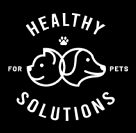It’s that scenario many of us are familiar with. It might be at home (typically when friends or family are visiting), maybe it’s on a walk through the neighborhood, or at the dog park. Your pup starts to drag her bottom on the ground. Everyone stops and stares. Some chuckle.
It’s so completely awkward, but it also makes you worried. You might ask yourself. “What’s she trying to do?” “Maybe she’s constipated?” “Is something stuck down there?”
We’ll review the top reasons why dogs drag their bottoms and where to start to help your pup’s tush. Time to get down and dirty.

Eau de… GROSS: The Anal Sacs
Dogs (and cats too) have small sacs just inside the anus where an equally small duct on either side allows the brown fluid stored there to be expelled during bowel movements. The material’s primary purpose is thought to be for scenting poop, which allows dogs to mark their territory.
You may have also heard anal sacs called anal glands, though technically this is an incorrect term. The gland of the anal sac is what produces the smelly fluid material. It’s then stored in the anal sacs.
Now sometimes, the sacs may not express easily with a bowel movement like they’re supposed to. But a dog can sense they’re full, and will scoot his bottom around to try to empty them. Sometimes this works, and shortly after scooting, that tell-tale fishy perfume permeates your entire house.
But other times, scooting once or twice may not cut it.
Normally, anal sac fluid is just that–fluid. Typically light or dark brown, with a smell only a dog could love. But if the sacs don’t express regularly, the material within them can get thick, like paste, and material like this simply can’t make it through those tiny ducts. When the sacs can’t empty, the term is called “impacted.”
Impacted anal sacs may still be expressible, but don’t try to do this yourself. Understanding what you’re feeling for and knowing how much pressure to safely exert without causing more harm, is an acquired skill that I might spend weeks teaching a new veterinary assistant.
Because there is a lot of bacteria normally found in feces, the same can be true of anal sac material. If the glands don’t express, they can become infected, and eventually turn into abscesses. If the abscess swells up enough, it can rupture through a new opening in the skin, called a fistula. When this happens, the area can at least drain on its own, but by this point has become a painful sore.
If an anal sac either becomes impacted or becomes abscessed, your poor pup may repeatedly scoot because of the pressure and irritation. A pup parent will also often see their furry friend licking or chewing excessively at her bottom.
Depending on the nature and severity, anal sac impactions and abscesses may be addressed with anti-inflammatories and antibiotics in the short term. But if the fluid in the sacs appears fairly normal but the sacs are filling up frequently, especially more often than every 4-6 weeks, it’s important to look for an underlying reason why they are not emptying as normal.
There’s a term in veterinary medicine called “ears and rears”, which describes dogs having recurrent ear infection issues paired with anal sac problems as a result of an underlying allergy. This could be environmental or related to a food protein, but addressing an underlying allergy concern may help and this starts with a conversation with your pup’s doctor.
Chronic soft or loose stools can lead to poor anal sac expression. Sometimes some extra fiber in the diet can help bulk up their stools and allow the anal sacs to empty properly. There are several methods of adding fiber to the diet. An easy one to try is adding canned pumpkin (note: this is not the same as pumpkin pie filling, which has unneeded sugar and spices). A couple of tablespoons with each meal for a medium-sized dog is a good place to start and can be adjusted based on stool consistency. There are also some good supplement products out there, like Stop Scooting, which contain a variety of fiber sources in addition to pumpkin like psyllium husk and beet pulp.
Lastly, some dogs may just need their anal sacs to be expressed on a regular basis. A normal interval that could be expected is about every 4-6 weeks. Again, I don’t recommend learning how to do this at home, as it can be difficult to learn what to feel for and doing it improperly can cause your pup discomfort.

A Sore Bottom: Skin Irritation
Skin irritation on a dog’s bottom, like an allergic reaction to something, dermatitis, or a skin infection, is the second most common cause of dog scooting. Sometimes, it’s a chicken vs. egg situation. A pup might have problems with her anal sacs and develop a rash secondary to scooting, which leads to a vicious cycle of licking/chewing/scooting and more irritation even if the sacs are empty. But other times, an underlying skin allergy, like atopic dermatitis, or a skin infection may be occurring back there to cause the irritation in the first place.
If a rash is found and the anal sacs are not a concern, your vet may recommend doing some skin testing to check for infectious organisms in the area. Skin infections in dogs are often related to underlying skin allergies as well, warranting a discussion about further testing or starting therapy.

Hair Mats and Clingy Bits
Some dogs simply have longer hair, which when properly groomed and taken care of, can be a gorgeous site. But longer hair has its disadvantages too. It can get tangled, matted, and dirty. I’ve seen a few of my patients with a tangled mess underneath their tails giving it all their might to get that matted mess off.
Fortunately, this can be a fairly easy fix with some simple grooming. But it highlights the importance of checking this area on your pup frequently, especially if she has a long, thick coat prone to getting mats or collecting debris. Make sure not to neglect this area when brushing and grooming at home.
If your pup is a kind of breed with a thick undercoat that takes a while to shed out, it can help to use a special brush like a slicker brush or a de-shedding tool like the Furminator. The bottom area and between the legs are often-missed areas when it comes to brushing out undercoat. Don’t forget to give these areas extra attention.
Pesky Intestinal Parasites
Always having their noses to the ground, our dogs are at constant risk for accidentally ingesting intestinal parasite eggs from the dirt or stools of other animals.
Tapeworms especially can be irritating as they usually hang out around the anal opening in their desire to continue the life cycle by being ingested by another unsuspecting pooch. But in theory, any intestinal parasite can cause irritation back there, especially if they’re contributing to soft stool or diarrhea.
If scooting is associated with any loose stool, your vet may recommend checking or sending out a sample to look for any parasites. Most monthly heartworm preventatives have some spectrum of action against intestinal parasites, another reason to continue regular use year-round.
Masses and Growths
Fortunately, this category is less common. But if there’s a new growth developing in the region around the anus this understandably could be irritating enough to cause scooting.
There are a lot of different kinds of growths that can occur. Some common ones can include inflammatory nodules and small glandular wart-like growths. A third common type of growth in this area is called a perianal adenoma. It is not related to the anal glands, but rather to glands under the skin that surround the anal opening. Fortunately, this growth is also typically benign, meaning it doesn’t spread to other parts of the body. But these can grow quickly, and are usually in an awkward and irritating location making them important to have them addressed as soon as possible.
Because there can be several types of growths that occur in this area and no article can definitively tell you what a new growth on your pup’s bottom might be, it’s important to have your vet take a look, and possibly get a sample to evaluate or send out to a lab.

What to do when you see your dog scooting
If you see your pup dragging her derriere, the best place to start is to take a look under her tail. You’re not trying to diagnose anything, but getting an appreciation for what’s there is important, even from a standpoint of being able to explain it to your vet. Does the area appear red and irritated? Does something appear swollen? Is there matted hair or feces present?
Taking a look back there first may reveal to you a simple issue. Maybe your pooch only needs a bath to get some matted clingy fecal material removed. You might be able to take care of this yourself, or have your groomer address it.
A good groomer can usually recognize a potential medical problem that would need to be addressed by your dog’s doc. And if anything appears red or swollen, or if your dog continues scooting, licking, or chewing even after a bath, it’s time to see your veterinarian.
Let’s Drag It In
In short, scooting is so awkward to see when your pup does it, but it can indicate a problem that needs further attention.
Become comfortable with what the area under your dog’s tail normally looks like, so that when there’s an abnormality, you’ll be able to recognize it more easily. But that’s a sensitive area back there, so be careful about doing too much yourself. If anything looks painful or irritated please have your vet take a look.
About Us
We've taken the guesswork out of caring for your pets. Our formulations are created by experienced veterinarians to address specific solutions for a variety of pet issues.
All of our products are:
As seen on:












